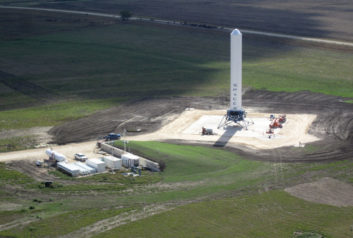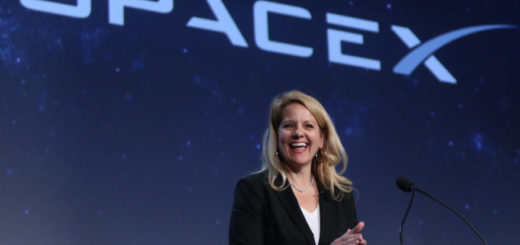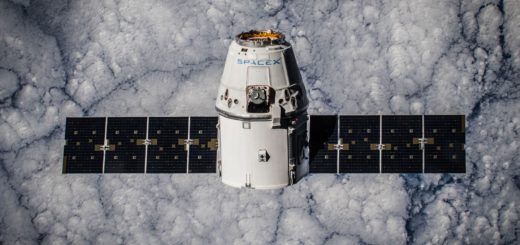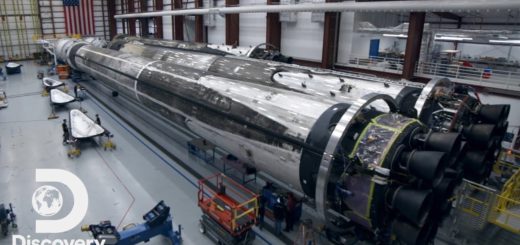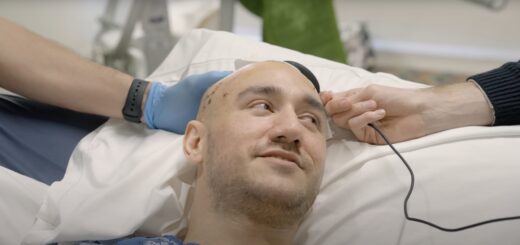Canceled SpaceX Projects: F9R-Dev2 and Spaceport America
We’re bringing you another installment of our new series of articles about SpaceX and their canceled projects. Check out our previous installment about Falcon Heavy crossfeed! This time we’ll take a look at the F9R-Dev2 test vehicle and SpaceX’s connection to Spaceport America in New Mexico.
In 2012, SpaceX was conducting trial launches at its McGregor test facility in Texas with a small single-engine rocket called Grasshopper. Between September 2012 and October 2013, this experimental vehicle successfully conducted a total of 8 short flights which helped SpaceX develop and perfect the software and other elements necessary to perform a soft landing with a rocket. The plan was to continue this development program with the more advanced F9R rockets (Falcon 9 Reusable). Unlike Grasshopper, the F9R vehicles were very similar to the Falcon 9 v1.1 rockets that SpaceX used on regular launches.
The tests were planned to have two phases, using two different rockets – the F9R-Dev1 test vehicle would be used for low altitude trials at McGregor and F9R-Dev2 would be used for hypersonic tests at high altitudes. F9R-Dev2 was to be tested at altitudes of up to 92 km at the commercial launch site Spaceport America. However, plans changed and even though SpaceX constructed both F9R development vehicles, only one of them actually flew.
In 2013, SpaceX announced that the high altitude and hypersonic tests of the Grasshopper program would be performed at Spaceport America in New Mexico, not at the nearby White Sands Missile Range, as originally planned. In May 2013, SpaceX began the construction of a 30-by-30-meter launch pad, located 7 kilometers from the spaceport’s main campus. The company leased the pad for 3 years for $6,600 per month plus $25,000 per test flight. According to Spaceport America director Christine Anderson, SpaceX invested $2 million in the facilities.
It’s important to note that at this point in time, SpaceX was already dedicated to the idea of propulsively landing their rockets. The landing test program was not limited to the Grasshopper and the subsequent F9R flights; the company also began applying the learned lessons to experimental landings of Falcon 9 boosters during launches for paying customers.
On the 17th of April, 2014, the F9R-Dev1 vehicle hopped for the first time in Texas to a height of 250 meters, but the very next day, the CRS-3 mission launched from Cape Canaveral, Florida. The Falcon 9 sent a Dragon capsule to orbit while the booster, the first one equipped with landing legs, performed a first ever successful ocean landing. Two months later, the F9R-Dev1 also tested grid fins for the first time during its third flight. Grid fins are used to steer the rocket during descent through the atmosphere before landing. A month later, another booster returned from space and softly landed in the ocean after launching six Orbcomm satellites into orbit.
Meanwhile, the F9R-Dev1 test program ended abruptly when the vehicle self-destructed during a test flight in August 2014 due to an engine sensor anomaly. It was assumed that SpaceX would simply switch the second test vehicle, F9R-Dev2, while also continuing to perform test landings during normal Falcon 9 launches. However, that’s not what happened.
In January 2015 during the CRS-5 launch, there was another attempt to land the Falcon 9 booster, but this time it would try to land on a “autonomous spaceport droneship” which was a modified barge that SpaceX developed for the purposes of rocket landings. The first attempt was unsuccessful because the booster’s grid fins ran out of hydraulic fluid, but even just the fact that the booster managed to hit the droneship with precision was a great success.
Over the following year, SpaceX kept trying to land the booster on several different launches. The landings weren’t successful but SpaceX was getting really close. This rapid progress pretty much sealed the fate of the F9R-Dev2; it just wasn’t needed anymore. SpaceX also never used the launch pad at Spaceport America since the planned high-altitude testing was superseded by landing attempts during regular launches. There was a rumor at the time, that SpaceX planned to refurbish recovered boosters at Spaceport America but that never happened.
In December 2015, SpaceX attempted to land the Falcon 9 booster on land instead of the droneship and actually succeeded on the first try. Then in April 2016, Falcon 9 landed successfully on the droneship for the first time during the CRS-8 mission. Since then, SpaceX managed to recover the boosters on dozens of launches. Many of the boosters were then refurbished and reflown.
So what happened with F9R-Dev2? In 2015, SpaceX planned to use the vehicle to perform the Crew Dragon in-flight abort test. In May 2015, a Falcon 9 booster with three Merlin engines was spotted at SLC-4E at Vandenberg Air Force Base where it performed a fueling test. NASA Spaceflight speculated that it might have been F9R-Dev2. However, the abort test ended up being delayed, partly because SpaceX suffered an anomaly during the CRS-7 mission in July 2015 and another one a year later during the Amos-6 static fire.
By the time SpaceX could think about doing the in-flight abort again, it was two years later. At that point all of SpaceX’s launch pads had been upgraded to support the new Falcon 9 v1.2 Full Thrust, which uses subcooled propellants. That meant that the F9R-Dev2 test vehicle, which was based on the older Falcon 9 v1.1, wasn’t compatible with any of the pads.
As late as March 2018, the rocket believed to be F9R-Dev2 was stored at Vandenberg Air Force Base near the LZ-4 landing pad. Later that year, however, the rocket was moved, and according to unofficial information from Reddit and NASA Spaceflight forums, was dismantled.
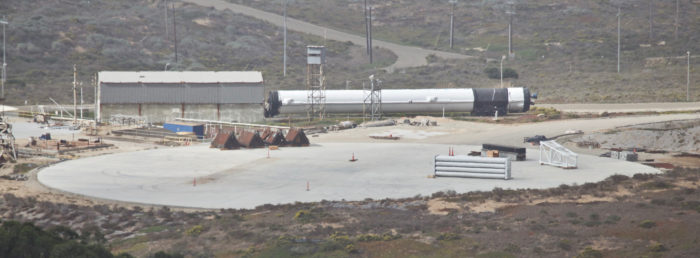
Landing Zone 4 (LZ-4) at Vandenberg in March 2018 with F9R-Dev2 in the background (Credit: Shorealone Films)
This article was originally published in Czech by Jiří Hadač and then translated into English by Vlastimil Švancara.








